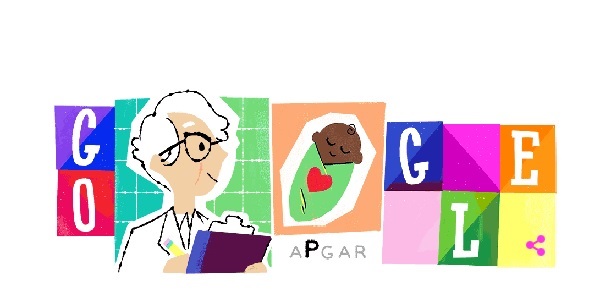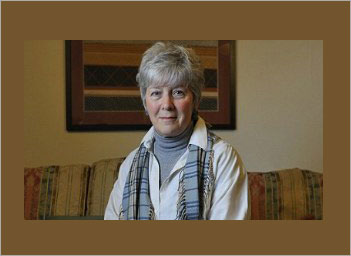Described as a leader in the field of anesthesiology and hailed for developing the Apgar score system, a test that determines 60 seconds after birth whether a baby needs help to sustain life, Virginia Apgar would have been 101 on June 7.
In her honour, Google is changing its logo in 15 countries to a doodle, or illustration, of her and the Apgar score.
Apgar was born in New Jersey. She was the youngest of three children. Her father was an insurance executive, but also an inventor and astronomer.
Before she was born, her eldest brother died from tuberculosis, and the other one suffered from chronical diseases.
This inheritance motivated her to study zoology, chemistry and physiology before attending Columbia University College of Physicians and Surgeons, and obtaining a medical degree in 1933.
However, she was soon discouraged by Dr Allen Whipple, the chairman of surgery at Columbia Medical Center, from pursuing her career as a surgeon.
According to a publication on The Time, there were only 7,000 women doctors in the United States before she was born, but the number dropped even further around the time she was born.
Many of the schools that offered accepted medical education did not admit women at all. Women who did manage to attain the medical degree were often discouraged.
She was no exception and she was instead encouraged to practice anesthesiology. Dr Whipple felt advancements were needed in that area, and she seemed to have the “energy and ability.”
She eventually rose and became director of Columbia University’s department of anaesthesia, and in 1949 she became the first woman to become a full-time professor at Columbia University.
She became a leading figure in the fields of anesthesiology and teratology. As attending anesthesiologist at Presbyterian Hospital, she assisted in the delivery of close to 20,000 babies.
Apgar Score
In 1950s, the US infant mortality rate decreased, but the number of infant deaths within the first 24 hours remained high.
She noticed that infants who were blue or were struggling to breathe were listed as stillborn and left to die.The scientist began investigating methods for decreasing the infant mortality.
She developed a test known as the Apgar Score, which measures body functions and helps doctors determine within 60 seconds after the birth whether a baby needs help to sustain life.
The functions are heart rate, respiration, muscle tone, reflexes and skin colour. Through this method she found out that a baby with a poor rating could be resuscitated by oxygen and warming.
Babies get a score of zero, one or two for each of those factors, and the total scores let doctors know if something is wrong.
Apgar’s work contributed to a drop in deaths, from one in 30 in the 1950s to one in 500 today. The Apgar score is still used in some hospitals in the United States.
Rubella pandemic
During the rubella pandemic of 1964, Apgar became an advocate for universal vaccination to prevent mother-to-child transmission of the disease.
Rubella could cause serious disorders if a woman becomes infected while pregnant.
Apgar promoted effective use of a testing, which can identify women who are at risk for transmission of antibodies across the placenta.
She devoted the rest of her life to prevent conditions that caused newborns to have low Apgar scores.
During her career, she maintained optimism and used to say “women are liberated from the time they leave the womb.”
Apgar never got married, “I never found a man who could cook,” she said.
She died in 1974 at the age of 65 from cirrhosis of the liver.





















